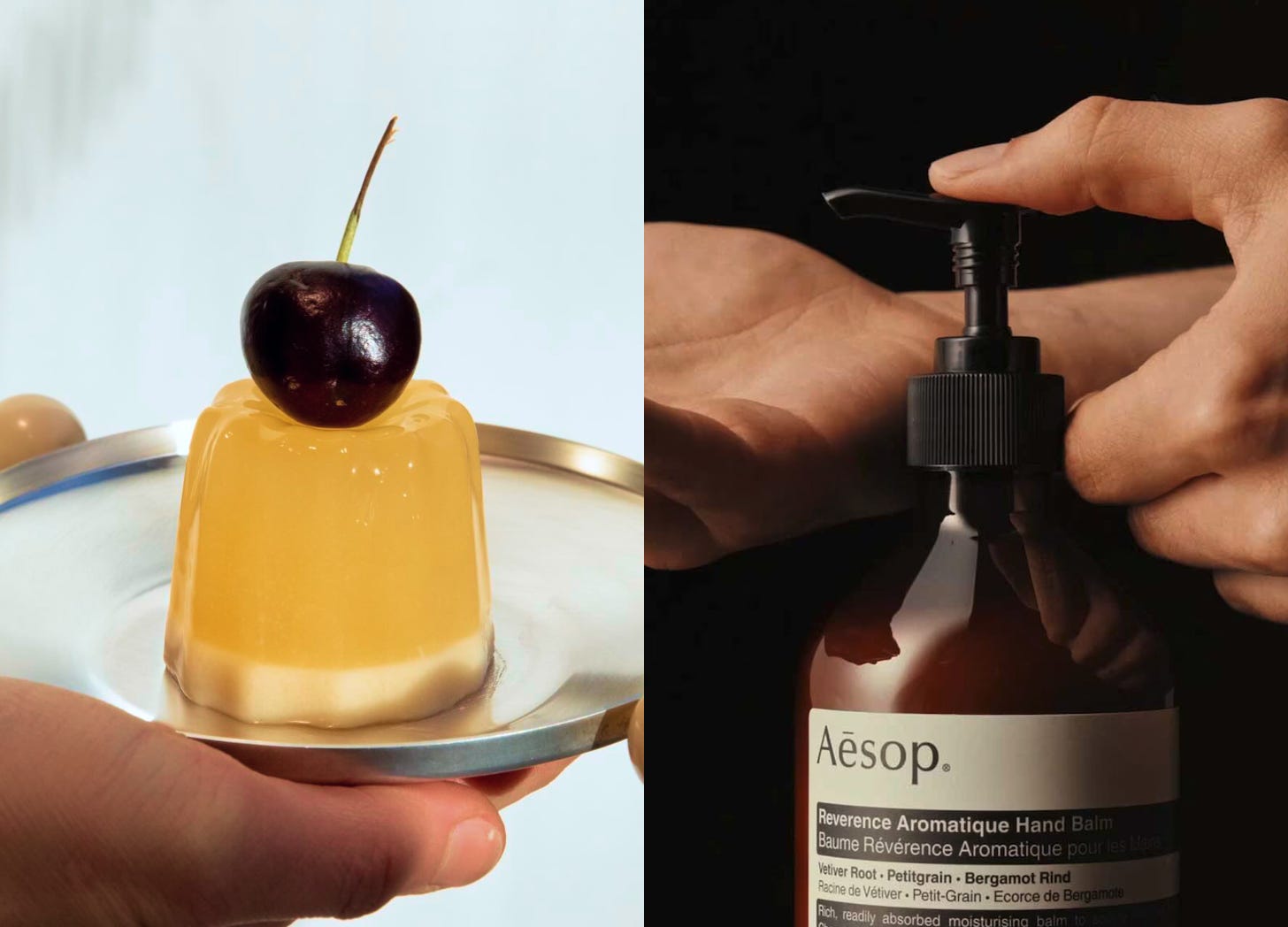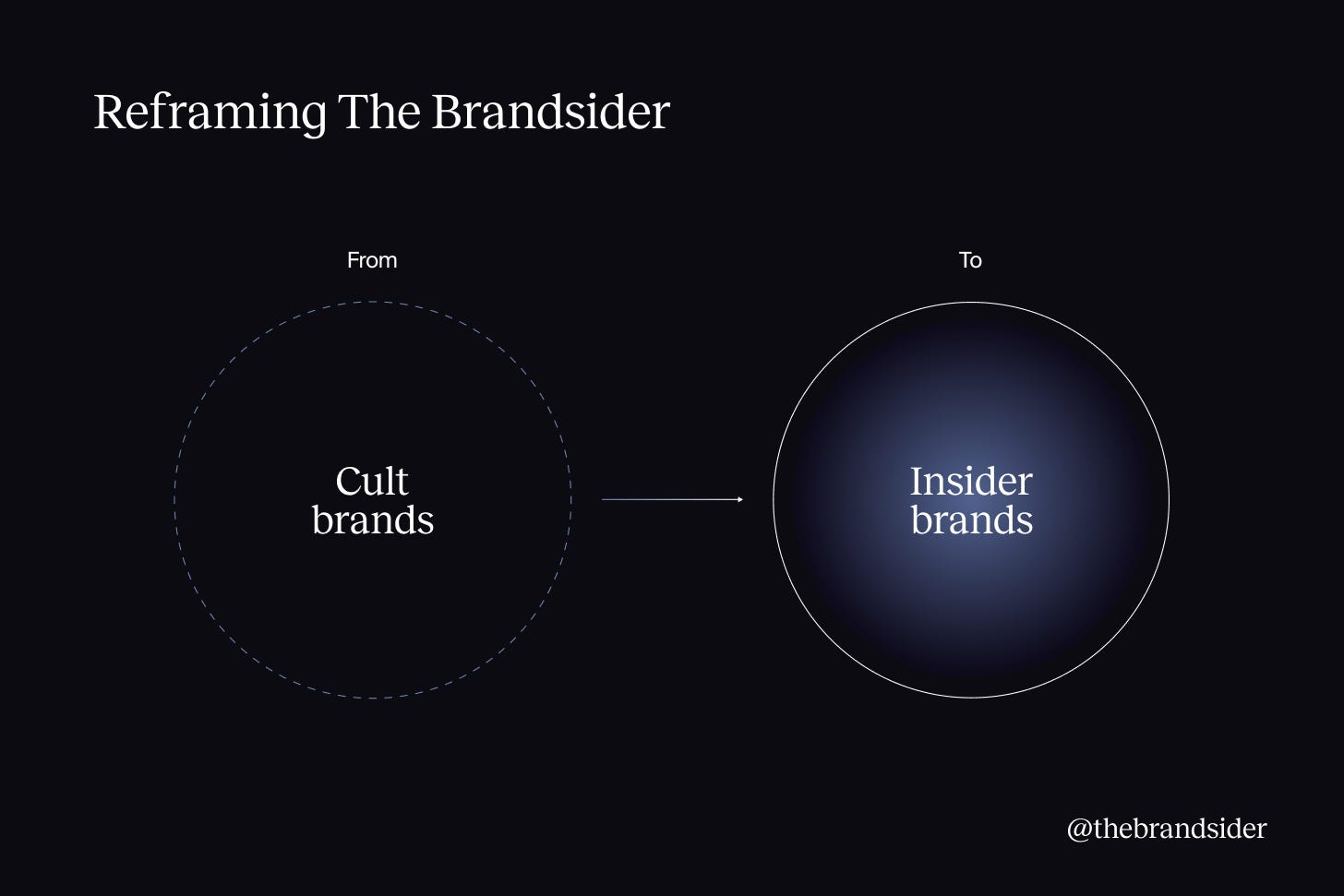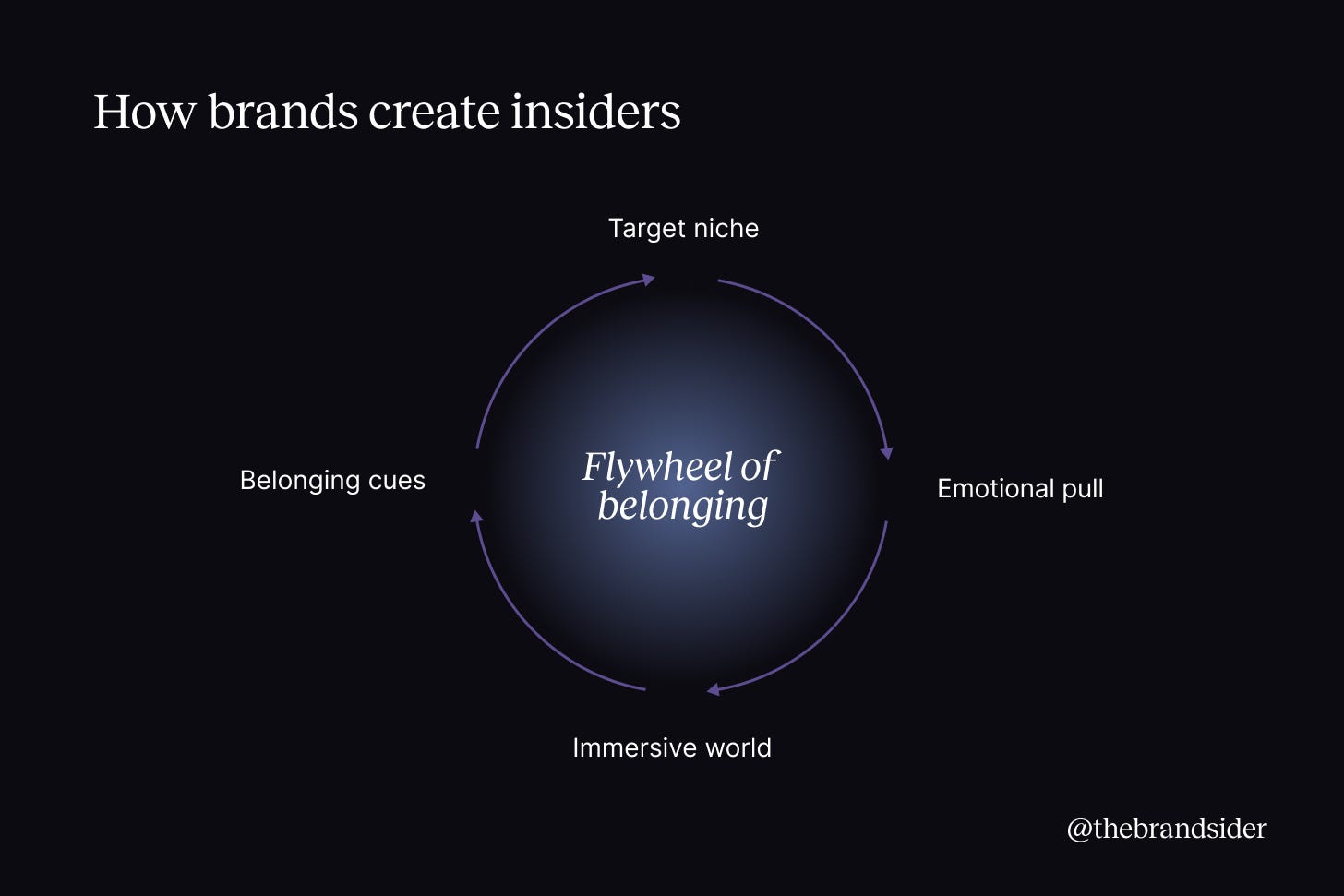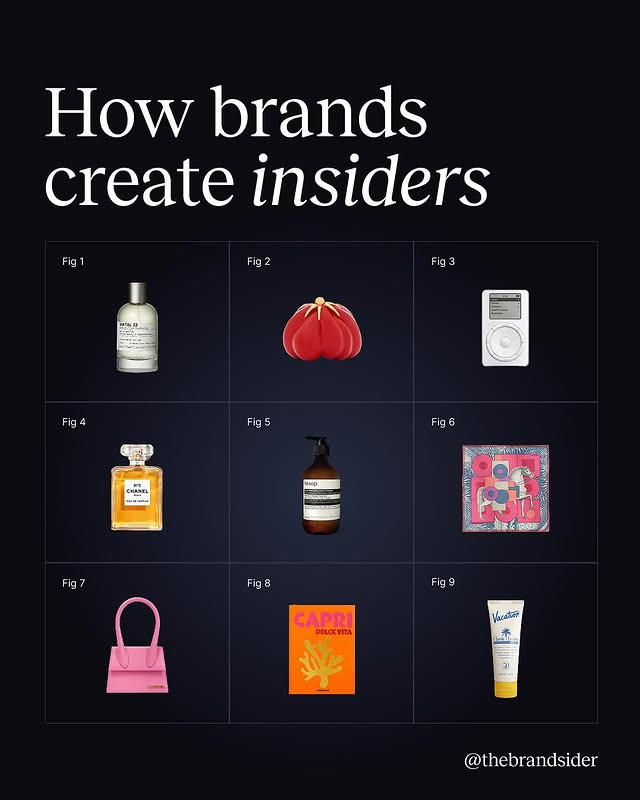How brands create insiders
and the problem with cult brands
The Brandsider is a newsletter about how brands create belonging. Subscribe for your weekly insider brand briefing.
September 26, 2025 | Edinburgh, UK
Hi - and welcome back to The Brandsider.
It seems I blinked and summer turned into fall. The Meadows’ tree-lined pathways are already carpeted in red and orange. My tank tops have been traded in for turtlenecks and scarves. And Edinburgh is finally stepping into her best self: misty mornings, cold nights, fires crackling in the hearth.
I’m excited - but I do wish I had more to show for September. This month was lighter on output, but heavy on clarity. These weeks of deep strategy work have been critical to setting The Brandsider up for long-term success - as both a platform and a business.
I won’t bore you with all the details. But before we return to regular programming (3 stories + a watchlist), I need to share the most important shift:
My decision to move away from cult brands.
And since I committed to building this in public, I want to walk you through my thinking. So today we’ll be covering:
The problem with cult
An introduction to insider brands
An evergreen framework for decoding belonging
What makes a brand cult-worthy?
Months ago, I made a video introducing The Brandsider, and framed this entire project around a single question: What makes a brand cult-worthy?
As a strategist who’s worked on major global rebrands, this is the one category I’ve always been fascinated by: brands that rise above the rest to achieve near-mythical status.
The Brandsider became my weekly study of what makes a brand cult. I analyzed dozens of cases and built an evergreen canon: 7 traits I noticed time and time again.
And yet, as I prepared to publish the IP I’d been developing, something felt off. A checklist didn’t capture what I was after. I wanted one truth founders, strategists, and marketers could take away - a north star that would shift the way we thought about building brands that matter.
But can cult be boiled down to a single thing?
The cult challenge
At the same time, I was forced to reckon with a nagging feeling I’d been carrying for months: that cult wasn’t the right framing for The Brandsider.
I struggled for three reasons:
Cult carries negative connotations: The primary definition of a cult is an organization where individuals are indoctrinated and (often) kept against their will. If you’ve seen my content, you’ll know that my lens is positive and professional - miles away from likening brands to nefarious religious sects.
Cult is ubiquitous: It’s a well-known industry term, and one that plenty of other companies have co-opted. Some of these lean pretty heavily into the perverse side of cult, which works well as a creative concept but isn’t my speed. At the end of the day, the term is evocative, compelling - but not ownable.
Cult is ambiguous: The term means different things to different people, and I found myself constantly over-explaining my lens. To me, cult isn’t a measure of worth, or status marker in the pecking order of brands. A cult brand is simply one with a devoted following: a community who champions and identifies with the brand. That means Aman and Aesop, but also other brands that ‘purists’ wouldn’t necessarily consider cult - like Gelée, Jones Road or Merit.
After a handful of comments and DMs, I had to ask myself:
was there a better concept than cult to stake The Brandsider on?
The insider insight
The answer to both those questions, it turns out, was hiding in plain sight.
The thing that both:
Truly sets cult brands apart
Expresses what I actually mean by cult
…can be boiled down to a single idea: belonging.
Specifically, belonging so strong that it makes people feel like insiders. Brands that nurture this belonging are the ones people want to identify with, be a part of, and can’t get enough of.
They don’t push products, they cultivate membership. And their power comes from trading in codes, references, and rituals that only make sense to those on the inside.
I call these insider brands.
(hilariously, this never occurred to me when coming up with the name for this platform 😅)
The flywheel of belonging
So how do insider brands actually create belonging?
Once I landed on the concept, everything snapped into place. The ‘7 pillars of cult brands’ I’d be working on for months evolved into a functional framework.
Not a checklist, but a system:
A flywheel that spins faster the more it’s fed.
The flywheel of belonging is made up of 4 components:
Target niche
Emotional pull
Immersive world
Belonging cues
1) Target niche
Insider brands start with the few for whom the brand feels like home. Think of concentric rings:
a broad target audience (demographic, psychographic, geographic, behavioural)
a tighter circle of brand lovers (repeat buyers who show early attachment)
and a bull’s-eye of insiders (people who make the brand part of their identity and carry it forward)
The goal isn’t to go broad, it’s to find the people who will feel the most intense alignment. Specificity matters here; different niches respond to different meanings. If the target is too broad, no one feels personally seen.
By defining the insider bull’s-eye - their values, aspirations, and the role the brand plays in their life - brands set the conditions for belonging to take root.
Watch → Merit is for grown-up Glossier girls (The Brandsider)
2) Emotional pull
Based on their target niche, the brand then defines an emotionally compelling reason to belong. This is the promise the brand makes to the customer (beyond product functionality).
It might never be said explicitly, but customers should be able to articulate why they buy into the brand. Specifically: what belonging to it tells the world about who they are, what they believe in, or who they want to be.
When this pull is clear, outsiders opt out and insiders self-select in.
Watch → For the Fishwives (The Brandsider)
3) Immersive world
From there, they enter the brand world to deepen their belonging.
At a minimum, this world is defined by a consistent set of rules that shape every touchpoint: packaging, stores, events, comms, partnerships, design. The red thread should be strong enough that the brand is instantly recognizable, even when a logo isn’t present. Consistency across every touchpoint is critical to maintaining the feeling of immersion.
But that’s just scratching the surface. To maximize belonging, the world needs layers - with the deepest ones only accessible (or understood) by true insiders. These deeper layers are made up of codes, references, experiences, and myths that only reveal themselves if you know what to look for. They reward attention and commitment - and offer belonging in return.
Watch → Labubu’s user-generated world (The Brandsider)
4) Belonging cues
The most devoted insiders don’t just live in the world; they express their belonging externally.
They carry forward elements of the brand - codes, artifacts or behaviours - to communicate their status. This is how insiders project, defend, and propagate membership without the brand present. This is also how brands become cultural movements.
By broadcasting their belonging, insiders attract the next cohort. This pulls new people into the niche, the cycle repeats, and the flywheel spins faster. Belonging is created, reinforced, and compounded.
This flywheel is how brands create insiders - growing the core community that carries the brand forward in good times, and bad.
Watch → Miu Miu’s codes of belonging
What’s next
Thank you for your patience as I’ve honed this direction and framework over the last few weeks. It never ceases to amaze me how creative clarity happens in fragments - and then all at once.
Next week, we’ll be back with a normal content cadence and Friday’s Briefing: 3 market stories, a watchlist - and what they teach us about how brands create belonging. In the coming weeks, I’ll also be developing case studies and resources that help you apply this insider brand framework in your own work.
I appreciate your support as always, and look forward to chatting next week.
—
xo,
The Brandsider








Very interesting read! Excited to see how your takeaways shift now :)
love your content, the aesthetics and attention to detail brought me here from IG. so good!